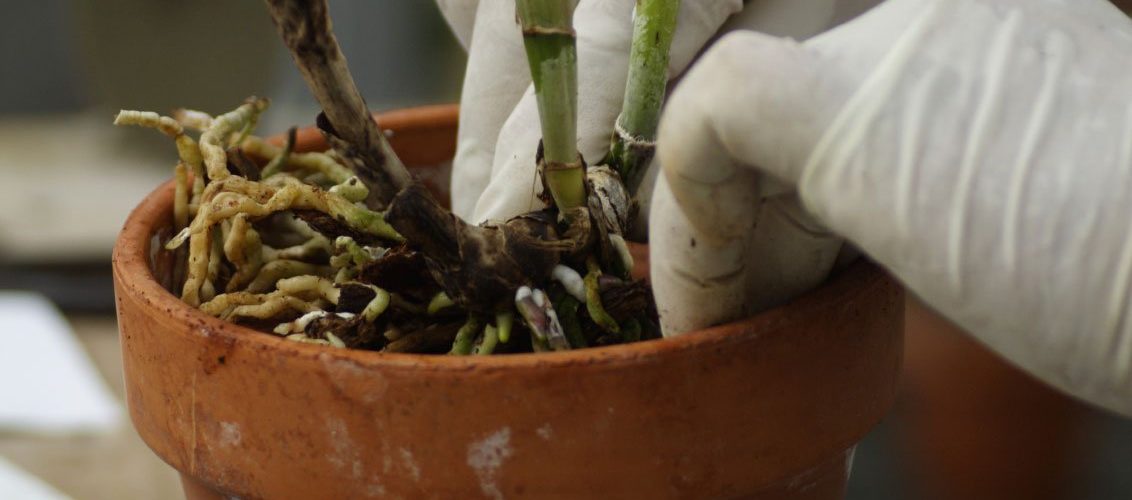Many people panic when they think about repotting their orchids fearing that they will never bloom again. In reality, orchids are very hardy plants and if properly nurtured will continue to form new blooms every season. All it takes is a regular watering schedule, good lighting, moderate temperature control and an occasional repotting to maintain a healthy plant. Orchids should only be repotted after the bloom cycle is complete and will spring back quickly after repotting. By following a few basic steps when it’s time to repot, new flower stalks will be encouraged and the plant will continue to thrive.
How to Repot Phalaenopsis Orchids?
The most popular type of orchid grown indoors is the phalaenopsis. These plants are readily available at nurseries, supermarkets and florists and produce colorful long lasting blooms. They require minimum care and should be repotted about every two years. Key points to remember about phalaenopsis plants before repotting:
1. Good air flow is vital: choose a pot that allows the roots to become slightly dry between watering and that does not allow the roots to sit in standing water.
2. Wait until the plant has finished blooming.
3. Buy an orchid planting mix specifically designed for this variety, usually available at garden supply centers or nurseries.
Repotting Steps: First gather together the orchid potting mix, the new container and a clean pair of scissors. These orchids do not necessarily need a larger container; fresh orchid potting mix and a cleanup are the main objectives.
Gently remove the orchid from its container and scrape off the existing soil and residue from the roots. The results will be a dangling bunch of air roots and the green leaves. Inspect the orchid for any trace of dried roots and snip those off at the ends. Place a small amount of orchid potting mix at the bottom of the new container. Place the orchid in the pot and gently pack additional orchid mix around the roots. Water and drain the plant thoroughly. The orchid should be fertilized at least every 3 weeks even during non-blooming periods.
A good reference for help visualizing the process can be found by watching the video below:
How to Repot Cymbidium Orchids
Although cymbidiums may be grown indoors in an environment with plenty of light and warmth, they prefer the conditions in a greenhouse in cooler climates or a shaded patio in warmer climate zones. They differ from the phalaenopsis varieties in their soil preferences and potting conditions. The key points to remember when repotting cymbidiums:
1. Don’t repot too often. Cymbidiums prefer crowded conditions and will form new bulbs and plants within the pot.
2. Wait until the blooming cycle is complete before repotting.
3. Use a fertile potting soil mix combined with an orchid mix and fertilize throughout the year.
Repotting Steps: Gather together a good quality potting soil and orchid mix, a new container and trimmers. If the plant is crowded and the goal is to create a larger space, use a bigger container than the original. Otherwise the plant may be separated into smaller pots that contain a few groupings.
Remove the plant from the pot, brush off excess soil and trim any brown leaves or old flower stalks. Place a small amount of potting soil in the bottom of the container, insert the cymbidium groupings and add additional soil to fill the pot. Pack the gently around the plant. Leave enough space at the top of the container for watering. Water and fertilize the repotted plants every week.
The step by step instructions on the video below are helpful:
http://www.youtube.com/watch?v=4ozQ9IHOwbg
<>



